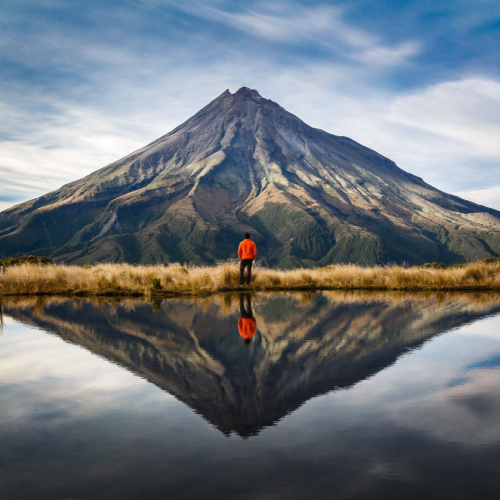
gregorioa/Shutterstock
When Is the Best Time to Visit New Zealand?
The best time to visit New Zealand is during the shoulder seasons of spring (September to November) and autumn (March to May). These months typically feature mild, sunny weather, offering a more comfortable and less crowded experience than the busy summer season.
Advantages of Visiting New Zealand in the shoulder seasons include:
- Mild weather: New Zealand enjoys a temperate climate. The shoulder seasons provide enjoyable temperatures perfect for sightseeing and outdoor activities.
- Smaller crowds: These periods see fewer tourists, allowing for a more relaxed experience at top destinations like Milford Sound, Mount Cook National Park, and Abel Tasman National Park.
- Lower prices: Travel costs, including flights and accommodations, are generally more affordable during these times compared to the peak summer months.
Here are some specific examples of how you can enjoy the most of New Zealand during the shoulder seasons:
- Spring (September to November): Enjoy sunny, mild days ideal for hiking in Abel Tasman National Park, exploring Milford Sound, or attending the Auckland Writers Festival.
- Autumn (March to May): Experience similar pleasant weather, perfect for witnessing autumn colors in Mount Cook National Park, exploring the Waitomo Glowworm Caves, or enjoying the Wellington International Arts Festival.
While New Zealand is a year-round destination, the shoulder seasons of spring and autumn offer the best mix of good weather and varied activities.
 Average Temperatures by Month
Average Temperatures by Month
|
Jan |
Feb |
Mar |
Apr |
May |
Jun |
Jul |
Aug |
Sep |
Oct |
Nov |
Dec |
| Fahrenheit |
68°
|
68°
|
66°
|
61°
|
57°
|
53°
|
52°
|
54°
|
57°
|
61°
|
63°
|
66°
|
| Celsius |
20°
|
20°
|
19°
|
16°
|
14°
|
12°
|
11°
|
12°
|
14°
|
16°
|
17°
|
19°
|
Climate in New Zealand
Summer Season in New Zealand
New Zealand's summer, stretching from December to February, is a time of warm, sunny days with temperatures typically between 20°C to 30°C (68°F to 86°F). It's perfect for all sorts of outdoor activities. In the northern regions, the weather is warmer and more humid, while the southern regions offer a cooler escape. This season is especially popular among both local and international tourists, drawn by the long days and diverse natural landscapes.
Rainy Season in New Zealand
In New Zealand, you won't find a traditional rainy season. Instead, winter brings more rain, especially in the western parts. But really, a shower could surprise you at any time of the year, no matter where you are. The West Coast of the South Island and the northern parts of the North Island are particularly known for their heavier downpours. So, if you're heading there, keeping an umbrella handy isn't a bad idea!
Winter Season in New Zealand
Winter in New Zealand, from June to August, is a tale of two islands. The North Island keeps it mild, offering a gentler, cozier winter experience. Head to the South Island, and you're in for a cooler adventure, with snow blanketing the mountains – a paradise for skiers and snowboarders. It's this beautiful contrast that makes New Zealand winters so special, whether you're looking to hit the slopes or enjoy the serene beauty of a milder winter landscape.
Our Recommendations
| Destination |
Jan |
Feb |
Mar |
Apr |
May |
Jun |
Jul |
Aug |
Sep |
Oct |
Nov |
Dec |
| New Zealand |
 |
 |
 |
 |
 |
 |
 |
 |
 |
 |
 |
 |






